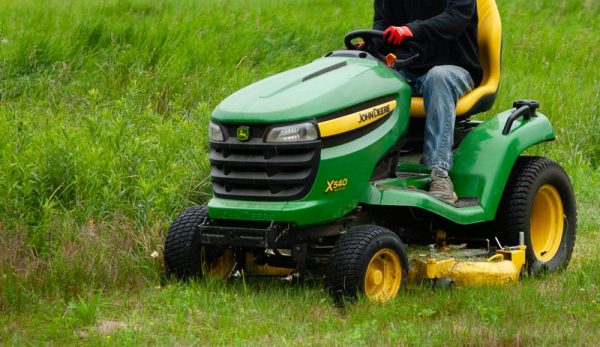
Usually, mowing a lawn or a field is a pretty straightforward task. The grass isn’t too tall, you’ve memorized the obstacles to avoid (if any), and you can pretty much execute the task from muscle memory.
It’s simply a matter of firing up an appropriate mower (riding mower, brush hog, string trimmer, reel mower, etc.). Then you just put in the time needed to complete the task.
But every now and then, a more formidable mowing project arises. Perhaps you’ve bought an old farm where the fields have been neglected. Or perhaps you’re looking to reclaim a corner of the back 40 where you let wild blackberries grow for a few years.
There are many reasons why mowing an overgrown field would be necessary. But doing so requires patience, the right machinery and a careful approach.
Before Mowing, Walk the Overgrown Field
Before you fire up a mower and plunge deep into unexplored territory, you should walk the field first. Try to cover the ground in a systematic manner, looking for items and obstacles buried under layers of dead grass.
Tree stumps, boulders, abandoned farm implements—you never know what might be out there when you’re mowing an overgrown field. Mark any items you find (T-posts work great) so you won’t forget their location.
Read more: T-posts are incredibly versatile on a farm, so make sure you have plenty on hand.
Consider Starting with a String Trimmer
Now it’s time to consider the type of mower you should utilize for the preliminary cutting. If the area isn’t very large, a powerful string trimmer mower can be a great choice—if you do hit an object, you’ll break the string instead of a blade.
But this is impractical for large fields, or areas where the grass is thick enough to tangle and choke the string trimmer, You’ll also be stymied by all but the smallest woody growth.
So if trees have taken root, you’ll need a bigger mower.
Tips for Handling the Job with a Riding Mower
If the area you’re tackling is primarily filled with grass and weeds (as opposed to woody growth), a riding mower might be your best choice. With the deck raised up as high as it will go, a riding mower can slice through some pretty tall grass.
It might not look pretty when you’re done. But if you rake away the clippings, you can mow the area again with a lower deck setting for better results.
To avoid choking a riding mower with too much grass, don’t mow with the whole swath of the deck at once. Start at the edge of the untamed field and cut just half a swath at a time. Drive slowly while discharging the grass into an area you’ve already mowed.
This will limit the amount of grass being fed to the blades. It will also provide you with an opportunity to feel out the territory as you drive.
Plus, by mowing only half a swath of field at once, there’s a good chance your front wheel (the one plunging through the wilderness) will bump up against objects hidden in overgrown grass before the mower deck. This will save you from the screech of blades grinding on an unseen rock.
Read more: These 10 tips will help ensure your mowing is on track.
For Heavy-duty Work, Use a Brush Hog
For the most imposing overgrown fields, a brush hog mounted on a utility tractor might be your best bet. Tall weeds and even some sapling trees bow before the power of these mighty brush-clearing beasts.
You might not get the appearance of a manicured lawn when you use a brush hog. But that’s not the point for your first spin around the field.
Once a brush hog has done the hard work, you’ll have a much better idea of how to proceed with tidying up the job. You’ll be able to see small stumps, low rocks and other obstacles more clearly with the grass and brush mowed down.
These can be removed by man or machine. Then, you can hit the field again with a more refined mower (such as a riding mower), further enhancing its appearance.
Congratulations! You’ve successfully mowed an overgrown field. Perhaps you’ve extended your lawn. Or maybe you’ve done the prep work for digging up a new garden.
With the right tools, anything is possible.




